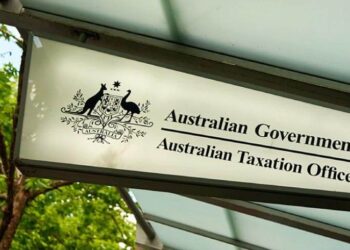The impact of the Division 296 taxing unrealised gains will have a “big and disproportionate impact” on a subsector of SMSF members, according to BT Financial Group head of financial literacy and advocacy, Bryan Ashenden, but that doesn’t mean they need to act immediately.
Ashenden noted in an article for SMSF Adviser sister brand ifa that these members, such as farmers and medical professionals, have “legally structured their affairs under existing rules” with the largest single asset of the fund surrounding an illiquid property.
“Farmers, who are often subject to seasonal fluctuations in their earnings, may have difficulty in finding avenues to pay any Division 296 liability that arises,” he added.
While this has been the subject of consternation among SMSF professionals – as well as farmer and small business associations – with parliament returning on Tuesday and the bill expected to be “introduced and pushed through as one of the first pieces of legislation”, Ashenden said the question of whether the start date changes from 1 July 2025 is a key consideration.
“The start date has raised questions for many,” he said.
“When originally announced, the government had stated they hoped to have the legislation passed by mid-2024 to give people time to adjust their affairs, if deemed necessary, to minimise the impact of the proposed tax, which is intended to commence from 1 July 2025. Well, we are now half-way through 2025 with no legislation.”
As he noted, there has been little to indicate the government intends to defer the measure and there is “nothing to stop them from ‘backdating’ the legislation, especially given it is a measure that has been known about for some time now.
“Additionally, the imposition of the first year of Division 296 tax won’t occur until the second half of 2026 (at the earliest) as the calculation of the tax liability requires the year end (30 June 2026) balance be known,” Ashenden added.
“All of this then brings us back to the two fundamental questions of, first, if your clients wanted (or needed) to take action to minimise the impact, should they be doing it now, and second, should any action even be taken?”
According to Ashenden, there is simply “no need to rush”, particularly until the legislation is officially in place and all the details are known.
Assuming that the final law will operate in the same manner as the previous bill, then because Div 296 requires that superannuation earnings for the year are greater than nil and the total superannuation balance at the end of the year is above the $3 million threshold, the balance at 30 June 2026 is the only relevant figure.
“This means that clients who want to take action still have almost 12 months to do so. There was no need to rush to have balances below $3 million by 30 June 2025,” Ashenden said.
“Importantly, it is worth discussing the advantages and disadvantages of withdrawing amounts from super just to avoid the Division 296 tax. Clearly, if a client is able to withdraw the funds from the superannuation system, then they must be over age 60. But they also must have more than $3 million in super – otherwise why do it.
“This means if they withdraw the amount to get them below $3 million, they will still have accumulated super over the general total super balance threshold and therefore won’t be able to make additional non-concessional contributions. In other words, if they choose to withdraw, they cannot change their mind and recontribute it back.”
Importantly, he noted, decisions should only be made after a proper calculation of how much extra tax a client would need to pay and, “from a pure taxation perspective, are they better or worse off with the money in super?”
“Remember, the extra 15 per cent tax is only levied on the increase in total super balances from the beginning to the end of the year (with some adjustments) and then only on the proportion of the total super balance in excess of $3 million at the end of the year.”
“If you have clients considering withdrawing monies to simply avoid having to pay Division 296 tax, then you need to ask them why.”
Ultimately, the most important consideration is whether the strategy makes sense and not move out of the super environment simply to avoid being taxed on unrealised gains if that isn’t the most beneficial option.
“Without doubt, the proposed Division 296 tax has stirred the hornets’ nest, and some are afraid of the sting it could impose. But care needs to be taken to not make rash decisions that ultimately may leave a client in a worse position simply to avoid this proposed tax on principles,” Ashenden said.
“And who knows, but is there a remote chance that some of the proposed mechanisms of the Division 296 operation could change as and when the bill makes its way through Parliament? Either way, it’s not time to sell the farm – at least not yet.”


